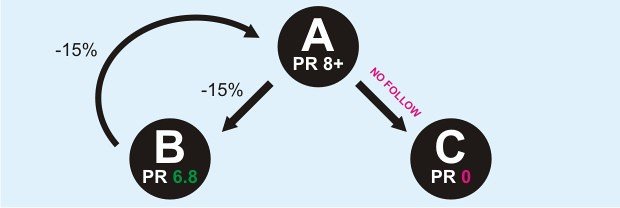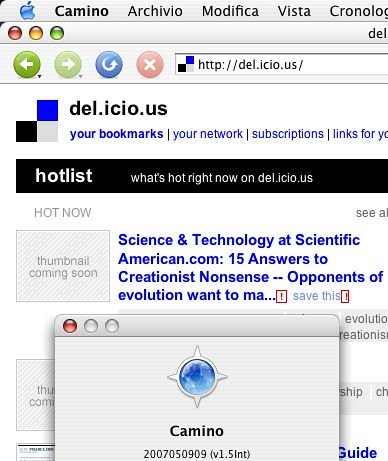In a realm veiled from the naked eye, where bits and bytes dance amidst the vast expanse of the world wide web, a subtle website guardian silently plays its role. Like a hidden hero, it goes unnoticed, and yet, its power cannot be underestimated. Ladies and gentlemen, allow me to unveil the mysterious cloak shrouding the Link’s Secret Identity: Nofollow.
In the grand tapestry of internet architecture, links serve as guiding threads, weaving the intricate web of connectivity. They allow us to seamlessly navigate through the digital landscape, transporting us from one virtual destination to another. But what if I told you that not all links are created equal? Enter the enigmatic Nofollow tag, a behind-the-scenes feature that has eluded the prying eyes of casual internet users for ages.
With this secret identity, Nofollow holds a superpower coveted by many, yet understood by few. Some claim it deflects the malicious intentions of internet villains, protecting us from unscrupulous clutches in the dark corners of the web. Others argue it maintains order in a chaotic digital world, preventing an unwelcome influx of spam and deceit.
But what exactly is this clandestine power invisibly woven within Nofollow? How does it work its magic? And why has it managed to stay beneath the radar for so long?
In this article, we embark on a captivating journey to unravel the enigma that is Nofollow. We will delve into its origins, explore its purpose, and shed light on the diverse perspectives surrounding its utility. With a neutral tone, let us uncover the truth behind this hidden ally, long masked by the mainstream media.
Whether you’re an eager web surfer, a curious content creator, or a seasoned internet aficionado, this article will enlighten you on the clandestine world of Nofollow. So buckle up and prepare to unearth the secrets that lie just beneath the surface of every link you encounter.
Table of Contents
- Understanding the Nofollow Attribute: Shattering the Web’s Best-Kept Secret
- Demystifying the Purpose of Nofollow: Unveiling Its Impact on SEO Strategies
- Unleashing the Power of Nofollow: Effective Tips and Best Practices for Link Building
- Unmasking the Nofollow Conundrum: Navigating the Complexities of Search Engine Algorithms
- Q&A
- Closing Remarks

Understanding the Nofollow Attribute: Shattering the Web’s Best-Kept Secret
The Nofollow attribute might seem like a hidden secret lurking in the depths of the web, but fear not! We are here to strip away the mystery and shed light on this elusive link attribute. Picture this: you’re a web developer, and you have two types of links in your arsenal – the regular, humble link and the enigmatic Nofollow link. What’s the difference, you ask? Well, let us unravel the truth for you.
1. The Regular Link:
– When you add a regular link to your website, you are essentially giving it the green light, telling search engines, “Hey, consider this link as a recommendation from me. Trust it and follow it!”
– It’s like introducing your best friend to the world, vouching for their awesomeness and saying, “You need to meet this person, they’re amazing!”
2. The Mysterious Nofollow Link:
– The Nofollow attribute, on the other hand, is like adding a cloak of invisibility to your link. It tells search engines, “Don’t follow this link, don’t pass on any of your search engine-ranking power to this page.”
– Imagine you’re keeping a secret identity, only revealing your superpowers when absolutely necessary. That’s exactly what a Nofollow link does! It hides itself from search engines, ensuring they don’t attribute any SEO benefits or authority to the linked page.
Now that the secrets of the Nofollow attribute have been unveiled, it’s time to put it into action. Whether you want to prevent spammy comments from harming your website’s reputation or maintain control over the flow of SEO value, the Nofollow attribute is here to help. So, don your web developer cape and harness the power of Nofollow to conquer the mysteries of the web, one link at a time!
Demystifying the Purpose of Nofollow: Unveiling Its Impact on SEO Strategies
In the vast world of SEO strategies, there’s a mysterious character that goes by the name of “nofollow”. What exactly is nofollow and what role does it play in the grand scheme of things? Prepare to have your questions answered as we delve into the secret identity of the link attribute known as nofollow.
1. The Hidden Power of Nofollow: At first glance, you might think that the purpose of nofollow is to render a particular link useless for search engines. While it does prevent search engine crawlers from following that link, its true power lies in its ability to shape the flow of authority and improve the overall health of your website’s link profile. By strategically using nofollow, you can guide search engines towards the most important pages on your website, ensuring they receive the attention and recognition they deserve.
2. Nofollow vs. Dofollow: Now that we’ve unveiled the enigma of nofollow, let’s compare it to its counterpart, dofollow. Unlike nofollow, dofollow links allow search engine crawlers to follow and pass authority from one website to another. While both types of links have their place in a well-rounded SEO strategy, it’s important to understand their distinctions. Nofollow links are commonly used for certain types of content, such as user-generated content or paid advertisements, where you may not want to pass on SEO value. On the other hand, dofollow links are typically found within the editorial content of websites, where the intention is to endorse and pass authority to other sources.
So, there you have it – the mysterious secret of nofollow has been revealed. Remember, incorporating a balanced mix of nofollow and dofollow links can greatly impact your website’s SEO performance. By understanding their purpose and implementing them strategically, you can optimize your link profile and boost your website’s visibility in the search engine rankings.
Unleashing the Power of Nofollow: Effective Tips and Best Practices for Link Building
Unleashing the Power of Nofollow: Effective Tips and Best Practices for Link Building
When it comes to the world of link building, there is a secret identity that many links hold – the nofollow attribute. Often misunderstood and even disregarded, the power of nofollow links is far from negligible. In fact, understanding how to use them strategically can have a significant impact on your website’s SEO success.
So, what exactly is a nofollow link? To put it simply, it’s like a secret agent that tells search engines, “Hey, I’m here, but don’t count me as a vote of trust for this website.” While normal, or “dofollow” links, are considered endorsements that pass on link juice and contribute to a website’s Google ranking, nofollow links serve a different purpose.
Although nofollow links don’t directly boost your SEO, they play a crucial role in your link building strategy. Here are some effective tips and best practices to unleash the power of nofollow:
- Diversify your link profile: A healthy link profile consists of a mix of both dofollow and nofollow links. Combining the two ensures search engines view your website as reliable and natural.
- Focus on quality over quantity: When acquiring nofollow links, aim for reputable sources that are relevant to your industry. High-quality nofollow links from authoritative websites can still drive valuable referral traffic.
- Engage in social media: Social media platforms often use nofollow links, but they provide an opportunity for reaching a wider audience and building brand awareness. Don’t underestimate their indirect SEO benefits.
Remember, the secret to a well-rounded link building strategy lies in understanding and leveraging the potential of nofollow links. By incorporating them into your overall SEO plan, you can enhance your website’s visibility, credibility, and ultimately, its ability to attract organic traffic.

Unmasking the Nofollow Conundrum: Navigating the Complexities of Search Engine Algorithms
When it comes to search engine algorithms, there is one mysterious term that often leaves beginners scratching their heads – nofollow. It’s like the secret identity of a link, lurking in the shadows of the web. But fret not! In this post, we are going to unveil the mystery of nofollow and help you navigate its complexities.
First things first, what is nofollow? In simple terms, it is an attribute that can be added to a hyperlink to tell search engines not to follow that particular link. But why would anyone want to do that? Well, there are several reasons.
- Nofollow links are often used to prevent spam: Imagine a world where anyone could place links anywhere and manipulate search engine rankings. Chaos would ensue! Nofollow links help prevent this by signaling to search engines that certain links should not be considered for ranking purposes.
- Nofollow links can preserve your website’s authority: When you link to other websites, you are essentially endorsing them. But not all websites are created equal, and you may not want to vouch for every link you include. By using the nofollow attribute, you can maintain control over your website’s authority.
- Nofollow links keep paid endorsements in check: Transparency is crucial in the online world. If you are paid to promote a product or service, search engines expect you to disclose it. By adding the nofollow attribute to your paid endorsement links, you are staying true to these principles.
Q&A
Q: What is “” all about?
A: “The Link’s Secret Identity” delves into the enigmatic world of nofollow links, exploring their purpose and unraveling the mystery behind their hidden powers.
Q: What exactly is a nofollow link?
A: Ah, the mystical nofollow link! It is a special type of hyperlink attribute that tells search engines not to crawl or pass any “link juice” to the linked website. Essentially, it’s like a secret trail for search engines that says, “Don’t follow me, I’m not vouching for this site!”
Q: Why were nofollow links created?
A: Back in the early days of the internet, search engines solely relied on the number of backlinks to determine a website’s credibility and relevance. However, this led to exploitative practices like link spamming. Nofollow links were then born to combat such abuse and provide a more balanced ranking system.
Q: Are nofollow links completely useless?
A: Absolutely not! Although nofollow links don’t directly influence a website’s ranking, they still serve valuable purposes. For instance, they can direct traffic to a website, enhance brand visibility, and assist in building a diverse and balanced backlink profile.
Q: How can I identify a nofollow link?
A: Ah, the detection of nofollow links – akin to spotting hidden treasure on a pirate’s map! You can easily uncover them by inspecting the HTML source code of a webpage. If you stumble upon the “rel=nofollow” attribute within an anchor tag, congratulations, you’ve found yourself a nofollow link!
Q: Is it advisable to use nofollow links on my website?
A: Certainly! Using nofollow links when it’s appropriate can help maintain a healthy link ecosystem. For example, if you’re linking to sponsored content, user-generated comments, or untrusted websites, slapping a nofollow tag on those links is a responsible move. Remember, it’s all about balance and fairness!
Q: Can nofollow links be converted to “follow” if the site gains credibility?
A: Indeed, they can! Search engines constantly reassess websites, and once a previously untrusted site gains credibility, switching a nofollow link to a follow one can positively impact its ranking. However, remember that it’s the search engine’s decision, and the process may take time.
Q: Are there any exceptions where nofollow links could still pass link juice?
A: Ah, the realm of exceptions, where rules often bend! Occasionally, search engines may choose to disregard the nofollow attribute, especially in cases like social media shares or news publishers. However, it’s always advisable to consider them as nofollow links unless explicitly stated otherwise.
Q: Can nofollow links impact my website’s organic traffic?
A: Directly, nofollow links do not influence organic traffic. However, their indirect effects should not be underestimated. By attracting traffic from relevant websites, increasing brand visibility, and enhancing your overall online reputation, nofollow links can contribute to an improved organic traffic scenario.
Q: Are nofollow links here to stay, or will they disappear in the future?
A: Ah, the crystal ball shows us a fascinating future! While we can’t predict with absolute certainty, it seems that nofollow links aren’t going anywhere anytime soon. As long as search engines strive for fairness and a balanced web ecosystem, the enigmatic nofollow link will continue to play its part.
Closing Remarks
As we conclude our journey into the depths of the web, we find ourselves at the final turn, ready to unveil the enigmatic secret identity of the link – the elusive nofollow. What once seemed like an ordinary component of the virtual realm, the link now reveals a hidden world, shrouded in mystery and intrigue.
The evolution of the web has brought forth countless wonders; the nofollow adds yet another layer of complexity to this ever-expanding tapestry. Nestled within the codes, it holds the power to shape the destiny of our search engine results, quietly guiding us towards websites deemed worthy by their creators.
As we peel back the layers of this clandestine identity, we come to understand that nofollow is more than just a technical attribute; it is a shield of sorts, protecting the pulsating veins of the internet from the wrath of spam and malicious intent. It acts as a formidable guardian, ensuring that the web remains a sanctuary of trust, authentication, and fairness.
But what of its role in the intricate dance of search engine optimization? Does the nofollow truly hold the power to sway the algorithms and guide the wandering gaze of internet users? The answer, my curious companions, lies in the hands of those who weave the threads of the web. Through their discerning choices, they navigate the twists and turns of this digital labyrinth, shaping the very fabric of our online existence.
So, dear readers, as we bid farewell to the enigma of nofollow, let us depart with a newfound appreciation for its hidden charms. Like a well-guarded secret, it serves as a testament to the ongoing dance between creators, search engines, and users, forever altering the course of our online journeys.
As we venture forth into the vast expanse of the web, remember to embrace the fluidity of its hidden identities, for therein lies the beauty and boundless potential of this intricate cyberspace. May the discovery of the nofollow’s secrets inspire us to delve deeper into the ever-evolving mysteries of the internet and forever remain in awe of its undeniable allure.

